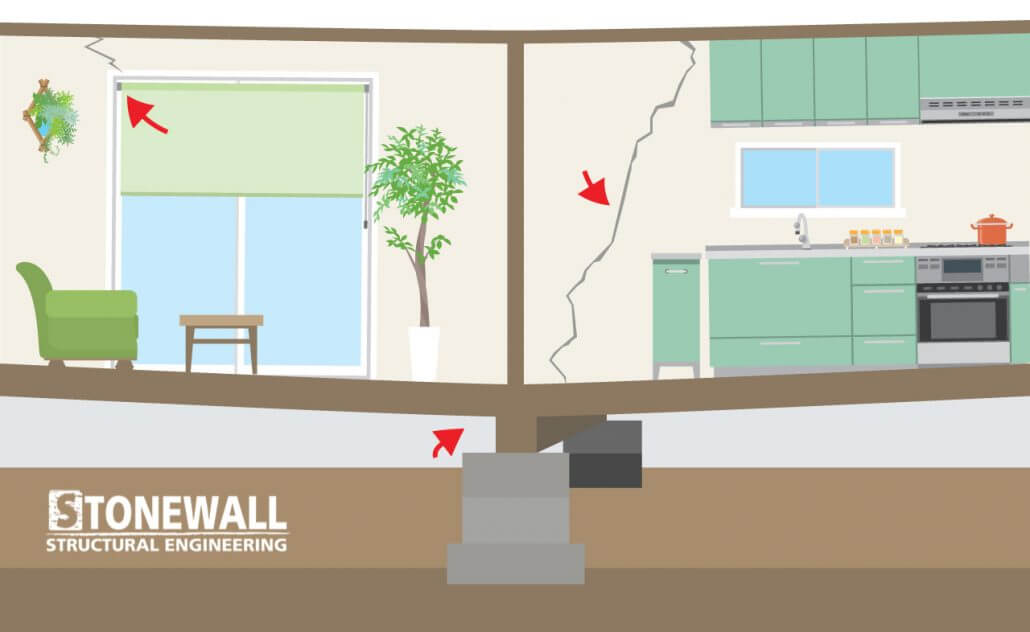Sloped Floors
Identifying Sloped Floors
What are the warning signs of sloping floors? How is the problem identified? What are the risks?
Homeowners usually notice either obviously sloped floors or defects to finishes. Some less obvious deformations caused by uneven floors could include: gaps in hardwood floors, doors that jam shut or won’t latch properly, cracked tile, warped or wrinkled carpet and vinyl flooring, or countertops that are separating from the walls or backsplashes.
Cause of Sloped Floors
How does this happen? Why are underlying factors?
Sloping floors are the result of settled interior support piers beneath the first-floor level. This occurs due to a myriad of framing issues, such as undersized framing with loads from above that have not been adequately supported with a continuous load path to the ground or deteriorated framing. Wood-destroying insects (termites or powder post beetles), water damage, heavy interior finishes (tile floors, stone-topped counters, kitchen islands, etc.), or settled slab foundations can also contribute to deionized framing.
The Solution
How are uneven floors fixed? What methods are used?
Sloped or uneven floors are usually fixed by jacking up floors and re-shimming the first-floor girders to the interior masonry piers adding new supplemental supports. We may also choose to replace or reinforce deteriorated framing, or lift the slabs with pressure grout or polyurethane foam which is injected beneath the slab. It’s important to contact a professional for an inspection to understand the best option to fix your floors.
Cost of Inaction
What is the potential cost of inaction (financially, physically) or not fixing sloped floors?
Failure to address sloping floors can result in recurring cosmetic damage to interior finishes such as drywall and tile cracks. In some severe cases, neglect can result in structural failure. In many instances, failure to address sloped floors can result in a higher cost of repair than if action had been taken sooner, and the longer people wait, the more difficult it is to correct. If problems are identified soon enough, relatively minor corrective measures can be implemented along with preventive maintenance to help avoid future sloping problems.












